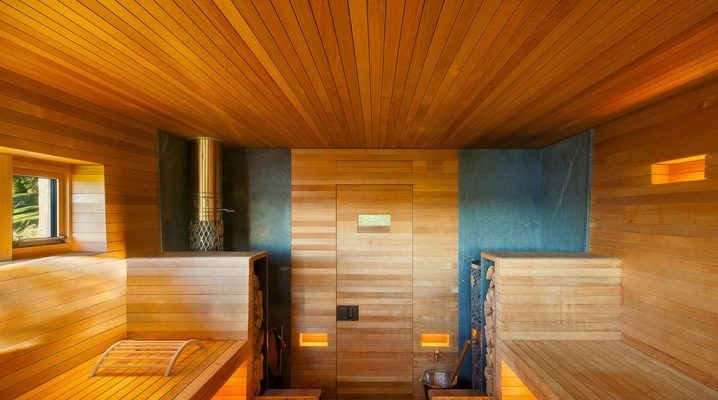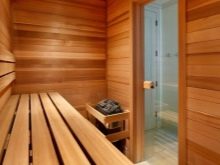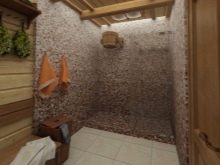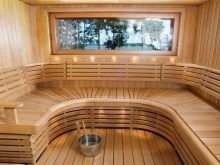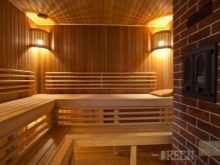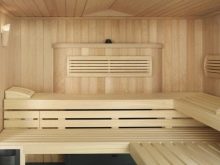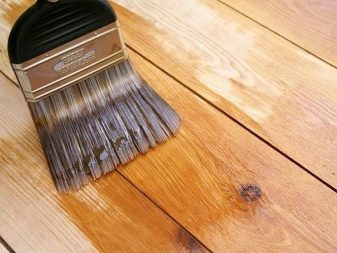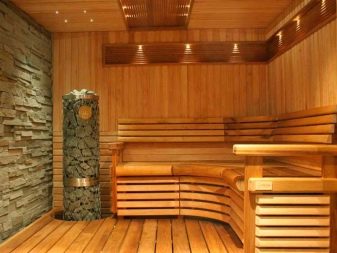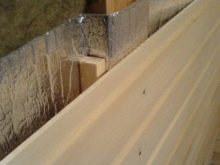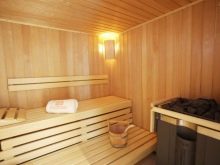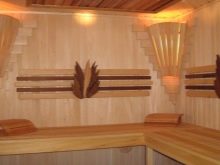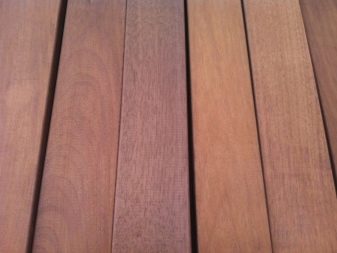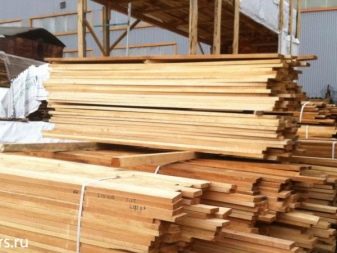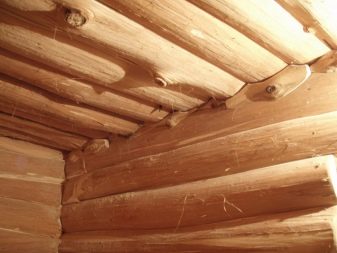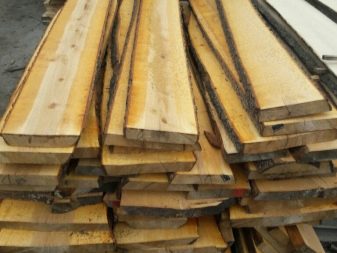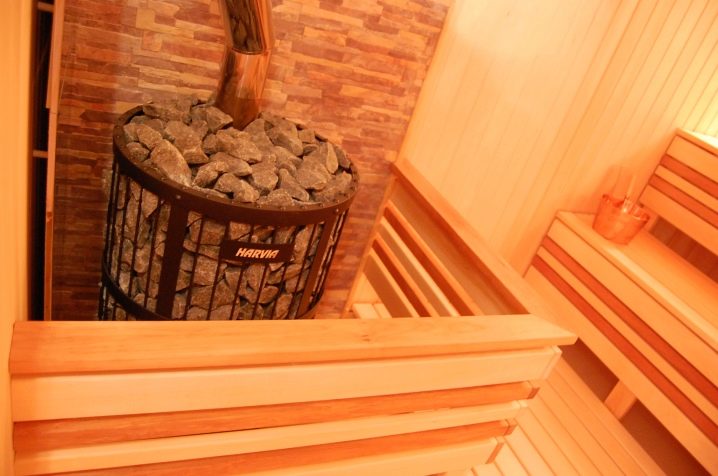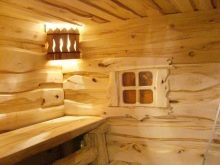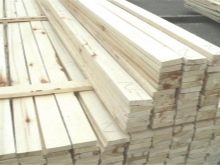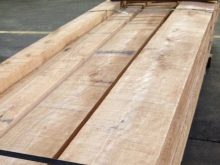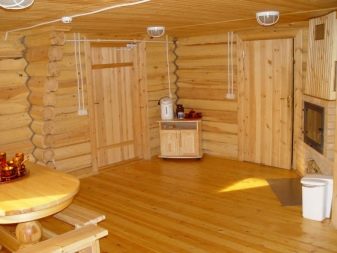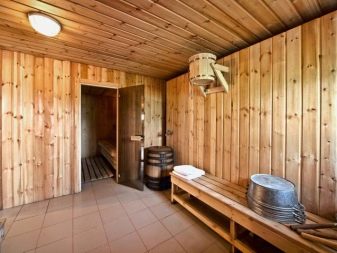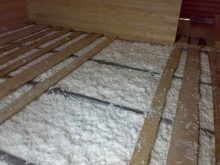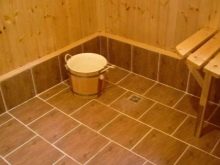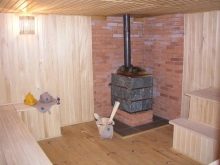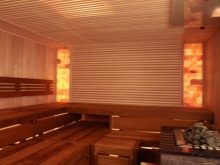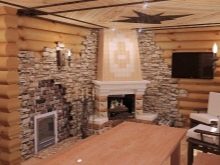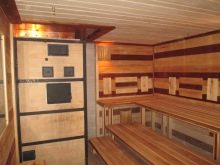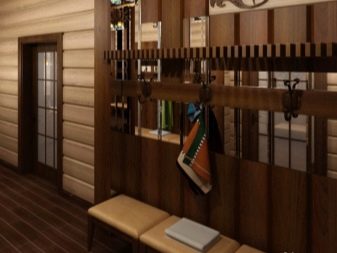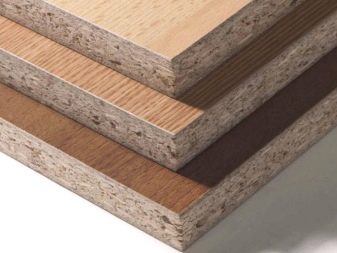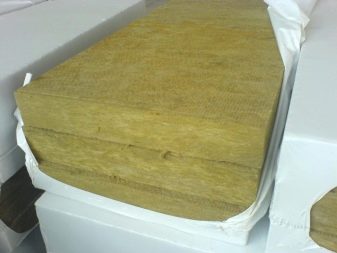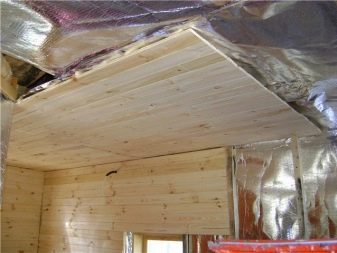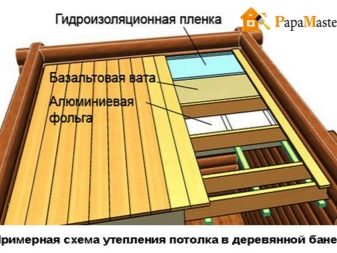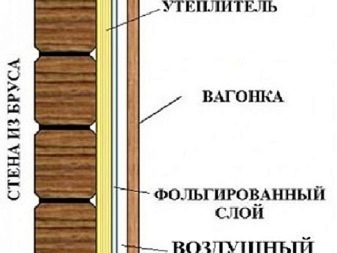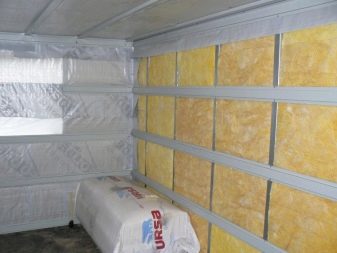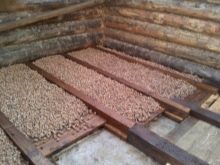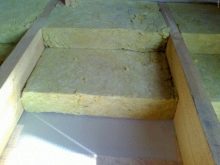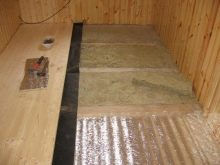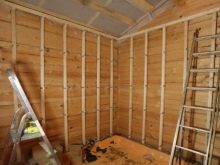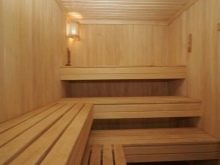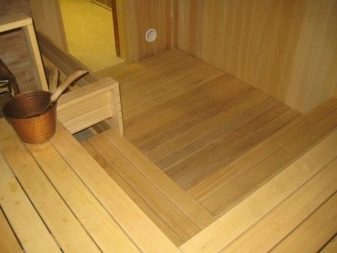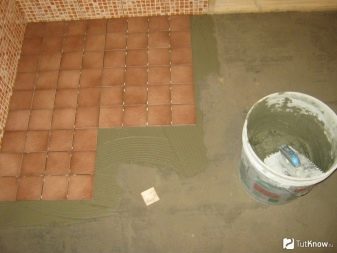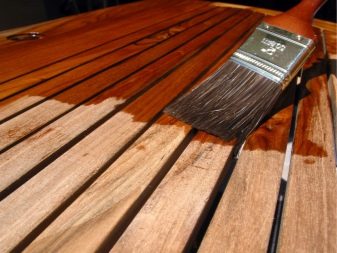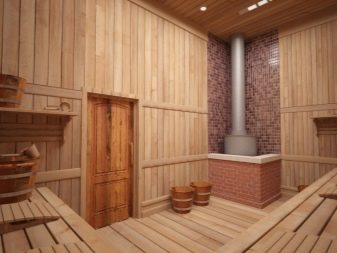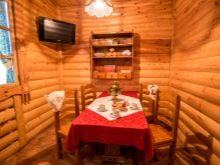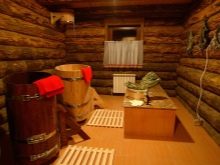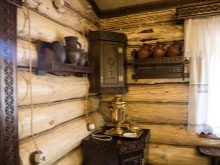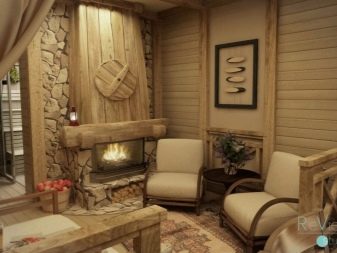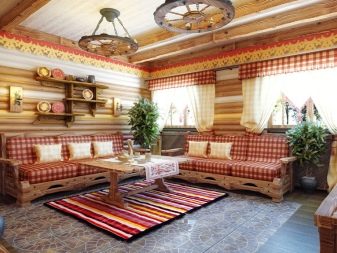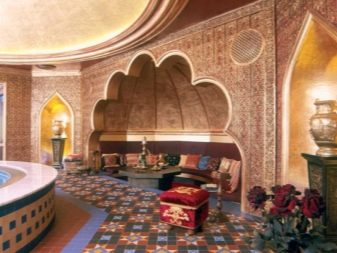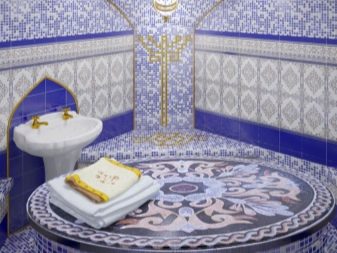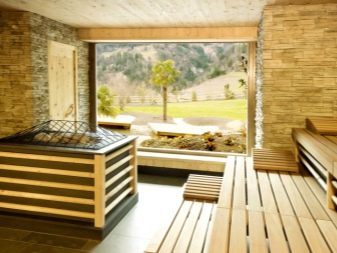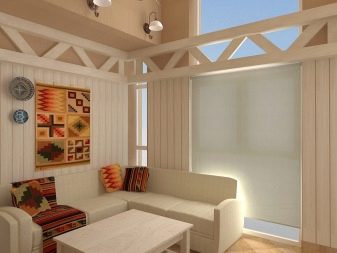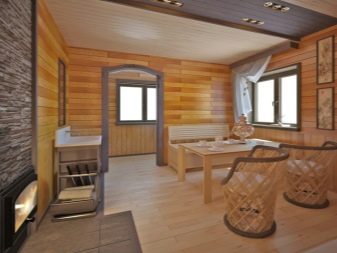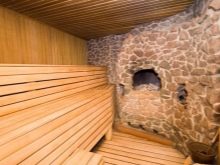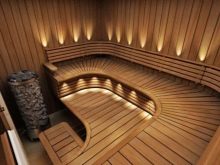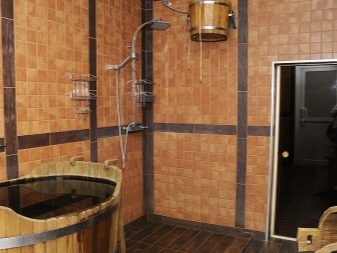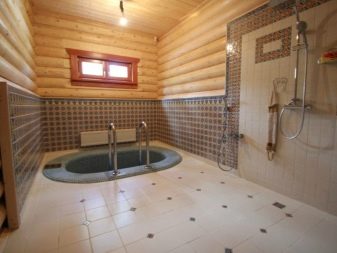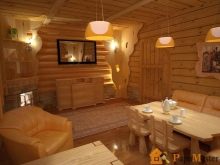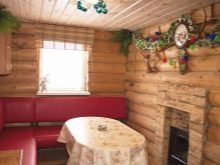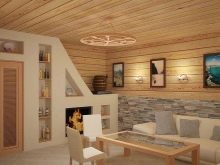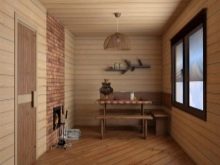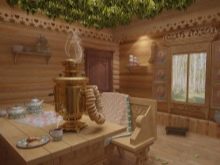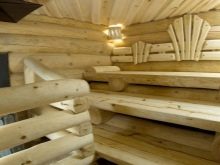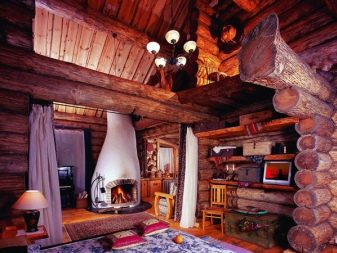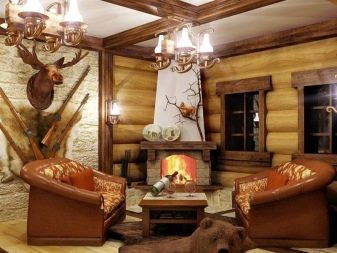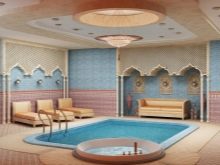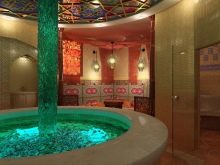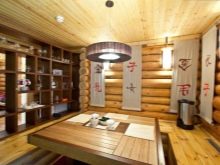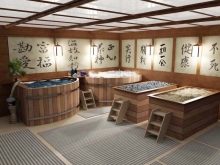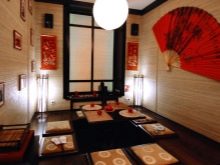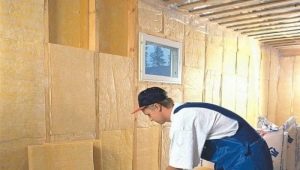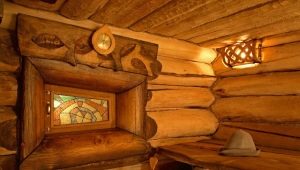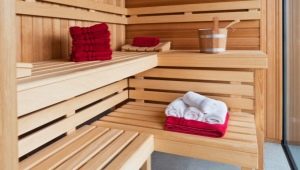Finishing of a bath inside: arrangement of a sweating room, shower, restroom
The quality of the interior in the bath is not only attractive design and pleasant aroma, but also in the practicality of the building itself. In the Russian bath, the temperature of humid air sometimes reaches +120 degrees, so the correct lining of the steam room can not only protect the walls from the aggressive effects of steam, but also protect a person from burns and allergic reactions.
Special features
Many home masters are sure that all the work on finishing the sauna from the inside is reduced exclusively to the stylish design of the walls, floor and ceiling. This is a common misconception; in practice, the organization of many other processes is required: hydro and vapor insulation, insulation of floors, engineering communications, treatment of coatings with antiseptics, fungicides, antiprene and much more.
The temperature in a traditional Russian bath, as a rule, ranges from +80 to +120 degrees, and the humidity level with more than 30%.Such operating conditions are considered extreme for any finishing materials. That is why the internal arrangement of such premises use only the most robust and environmentally friendly materials that do not emit toxic substances and do not distribute any unpleasant odors.
Only raw materials that are heated to a maximum of up to + 50-60 degrees are suitable for decoration, only ceramics and wood meet this requirement. The place near the firebox, as well as the stove itself, as well as places that may come into contact with human skin, are veneered only with natural materials with a low level of tar. Therefore, conifer varieties of wood are only suitable for the decoration of auxiliary premises.. Otherwise, there is a high probability of burns and the development of spasm of the respiratory tract, which leads to a sharp deterioration in health.
Wood must necessarily be treated with fungicides, as well as solutions that increase its hygroscopicity - this is necessary to protect the coating from the damaging effects of moisture and prevent the occurrence of mold and fungus.
Materials
Many wonder what material is better to decorate the rooms inside the bath. The most widely used lining - a small panel used for lining vertical surfaces. It is made from different wood species. The main advantages of lining are as follows:
- prevents the formation of condensate;
- is a “breathable” material that does not interfere with air circulation;
- has an aesthetic decorative appearance;
- easy to install;
- It has a relatively low price.
For finishing inside the rooms of a bath, trimming of unedged board is allowed.
- African oak (abachi). It is notable for its lightness, but at the same time it is strong and of high durability, it has a small weight, does not emit any resin, and practically does not contain knots. Abachi finishing materials do not burn the skin. However, this is a very expensive material, so not everyone can afford such a lining.
- Cedar. Ussuri and Altai breeds are most often used in decoration. They are resistant to high temperatures and excessive humidity, as well as an environment in which fungi do not breed and mold does not appear.At the same time wood has an aesthetic appearance and exudes a pleasant aroma.
Cedar is widely used in medicine, where it is famous for its healing properties due to its soothing and anti-inflammatory effects on the human body.
- Linden. Linden flowers are often veneered baths. Its advantages are high strength and strength with relatively light weight. The tree of this variety tolerates temperature fluctuations and frequent exposure to moisture, has an interesting texture and highlights the healing aroma, which has a healing effect on people suffering from diseases of the respiratory system.
- Alder. This is the best material for the interior of the bath, it is pleasant for the skin, and besides, when heated, it changes color a little, and after cooling it returns to its original color. This interesting effect creates additional aesthetic pleasure and contributes to increased comfort when taking bath procedures. From a practical point of view, it is worth noting that the alder does not emit tars and contains very few knots.
- Larch. This tree belongs to the pine, is distinguished by its strength and pleasant texture. When heated, it emits a pleasant aroma, as well as phytoncides useful for health and microclimate. Larch can serve quite a long time.
- Aspen. This material has a low cost, therefore, refers to the most budget options. The advantages include zero resin and ease of processing, however, this coating is prone to a variety of fungal diseases.
- Birch tree. It is characterized by a homogeneous, solid structure and an attractive appearance, but under conditions of elevated temperatures it can be slightly deformed. In order to prevent this from happening, you should give preference to thoroughly dried materials when buying.
- Ash. This is a very beautiful type of wood, with which you can achieve a stylish decorative effect.
Such breeds as meranti, Sedrell and ofram are very good for finishing baths - these are expensive types of wood. Their main difference is that even when exposed to high temperatures, they maintain a temperature equal to the temperature of the human body.Therefore, they are very convenient to use. However, their cost is quite high.
Not all wood is good for interior lining of baths. For example, pine and spruce can only be used to finish the shower room and recreation area. Making them in the steam room is not allowed, because the material in conditions of elevated temperature releases resins that can burn it on contact with skin.
It is not recommended to decorate the walls of the sauna with the products of oak and walnut processing, since the fumes they produce can cause breathing difficulties.
Not only walls, but also floors are covered with wood. However, for the decoration of the latter, you can also use ceramic tiles, and the place where they arrange the firebox is faced with bricks. Perlite is used directly under the floor covering - this is sand, which has good thermal insulation properties. This material is very light, so it is optimal for use in indoor areas where there is no wind, otherwise it will inflate.
Materials that are taken for the steam room shall not contain any knots, do not install metal protruding parts - all handles and holders are made of wood only.Even the shelves are made without the use of nails, as any object made of metal in high temperature conditions is very hot and can cause burns. Some consumers trim baths with clay, brickwork, salt tiles, bast and stone.
It is necessary to dwell separately on materials that cannot be used in the decoration of the bath, especially around the stove. Fiberboard and particleboard are flammable products, which also absorb moisture well. The only place where their use is permissible is the dressing room.
Regardless of the material used it is impossible to cover them with varnishes and enamels, as well as stain and other organic compounds. Under the influence of high temperatures, they begin to emit harmful substances that can lead to general intoxication of the body.
Step by Step instructions for finishing
The interior decoration of the bath includes several technological processes, each of which contributes to the protection of the structure against the aggressive effects of hot steam and forms a favorable microclimate in the sauna. In this case, absolutely all the work can be done by hand without the involvement of specialists.
To start the premises it is necessary to warm and install a vapor barrier in them. For this, basalt wool is widely used, which is characterized by good thermal insulation, and foil, which prevents the accumulation of condensate. The sequence of actions and stages of work are standard.
Ceiling insulation
You can start work with the ceiling. At the first stage of the internal arrangement of the bath, it is insulated. To this end, the foiled film is fixed on it with the reflective side down, in this case the coating is overlapped, and the joints are insulated with aluminum tape. The crate is mounted from wooden bars, for fixing which use screws. It serves as a frame for the finishing facing the steam room.
By the way, do not forget to protect the ceiling from the attic. Before falling asleep there is a layer of insulation, it is worth taking care of laying a plastic film that does not miss the dust and debris inside the bath room.
Wall insulation
The principle of wall insulation in the bath is the same as that of the ceiling. The only difference is that before warming the walls it is necessary to carefully cover all possible gaps and joints, only after that you can proceed directly to the installation.Thermal insulation material is mounted from bottom to top, perpendicular to the floor in three layers.
The first layer is waterproofing, which is applied to prevent condensation from settling on the walls. The second is directly insulation that helps to maintain the required temperature. Vapor barrier is needed to effectively protect the insulating material from moisture.
Floor insulation
The most practical and durable floor is made of concrete. However, this coating is quite cold, which leads to discomfort in the steam room. That is why for finishing the floor in the bath, most consumers prefer wood. To begin with settling the foundation, which laid beams and logs. The voids formed between them are filled with insulation, as a rule, a layer of sand or expanded clay is applied for this. Some isolate with sawdust, but this material in conditions of high humidity will not last long.
Then, a vapor barrier and the “first floor” are traditionally applied, a heater is put on top, a waterproofing layer is laid, and only then the base “finishing” floor. The first floor is a coating made of concrete and rubble, it is applied with a layer of 10–15 cm.To ensure effective waterproofing using roofing material, and as a heater should prefer mineral wool or expanded clay. The finishing floor is equipped from the paneling, so that it lasts a long time, it is treated with special antiseptic solutions.
Guide to the finishing of the bath has its own nuances. As already mentioned, the best option for facing the steam room and washing facilities is lining, it looks stylish and aesthetically pleasing in any interior. It can be made independently, however, the modern market offers a wide choice of products from any wood, therefore everyone can choose a ready-made coating to your own taste and wallet. The main advantage of lining - it is easy to install. To fix it on the wall, it is enough to use simple nails without caps or cleats.
Floor, ceiling and walls trim in the same style. If the walls are lined with clapboard, then the ceiling is better to mount from the same material. Attach it with a small gap, which allows to avoid deformation in case of swelling of the coating.
This gap protects against the need to rework the entire surface area.It allows the clapboard to move if the situation demands it.
As for the floor, it can be made of wood or use ceramic tiles. Wood floors can be leaky and leaky. In the first case, boards are mounted on logs with a gap, which, as a rule, is 5–20 mm. The boards of a non-permeable coating are stacked tightly to each other, therefore, they should be made of grooved material.
If the choice is on a clay tile, then keep in mind that after a steam room, it is not very comfortable to step on such a coating. In addition, you can easily slip on it. That is why experts recommend laying over the floor tiles of wood, made in the form of a narrow batten or use cork flooring. The tile is laid on a pre-leveled surface on a special glue, and all joints are treated with a sealant or grout of a suitable color.
Separately, I would like to draw attention to the processing of lining and other materials that are used for interior decoration of baths. So that the skin lasts for many years, does not lose its aesthetic appearance, does not crack and does not become covered with fungus, it is treated with special antiseptic compounds.The tree has a loose structure in which microbes like to “settle”. If we neglect the treatment, then rather fungi and mold simply populate all the wood and destroy it.
Certain requirements are imposed on impregnations: they must protect the raw materials, however, they must not prevent it from “breathing”. In addition, the material should be made of environmentally friendly components that do not emit toxic substances at elevated temperatures. In addition, the impregnations that cover the shelves, benches and table must withstand regular wet cleaning.
The shelves are additionally treated with solutions with deep absorption. They are available in the form of gels, solutions and sprays.
Room Design Options
The design concept of the interior of the bath can embody the ideas of a wide variety of styles. The most common is the Russian classic. This is an ideal option for registration of a wood bath. Its main advantage is that such decor does not require large expenses and can be easily equipped with your own hands.
The main components of this are wooden walls, wooden floor, concise benches and always a large wooden hospitable table.Such an interior is complemented by a Russian embroidered tablecloth and all sorts of trifles in the Russian folk style (wooden dishes, brooms on the walls and other elements). In such a bathhouse it will always be cozy and comfortable.
The country style is very close to Russian design. This is also a model of a “village” bathhouse, but with national motives of other countries. Light wood furniture, usually skillfully aged, crockery depicting rural landscapes and bright textiles are the main features of a country-style design that can be enjoyed by any sauna owner.
Fans of the East can be recommended to bring into your Russian steam room features of a hamam. In terms of decor, the main feature of the Turkish bath is considered to be mosaic, which is used in this country for cladding all rooms or rooms with a swimming pool, because there such a design will be most welcome. In addition, the rest room can be converted into a hookah, place a low table and scatter cushions of bright colors.
Fashionable in our days, the Scandinavian style got to the baths. This is not surprising, because the main feature of this trend is simplicity and natural chic.Deliberate roughness is combined with the classic design, and all elements of the decor are simple and functional. In the Scandinavian style, you can decorate the rest room. To do this, the surface is plastered with light shades and create a couple of bright accents, for example, a lamp of rich color or unusual paintings on the walls.
Elements of the classics can be introduced into the design of the washroom. If you build several arches, decorate the ceiling with stucco or install a multi-level floor.
The Art Nouveau style is less common in the interior of bathing facilities. It assumes an abundance of curved lines, abstract images and bright colors. This solution is for those who do not like stereotypes and are not afraid to experiment. Most often, this design is used in saunas made of foam blocks.
Steam room
A steam room is considered to be a fundamental element of any bath; therefore, it is worth using only the highest quality materials for its decoration. At the same time, as a rule, it has small dimensions, so the internal layout should be carefully considered so that there is enough space for everyone, as well as for all the necessary shelves and sun beds.
We should also focus on the lighting. Usually small lamps are mounted into the ceiling, which will give a dim, muffled light. A good visual effect is achieved if you equip the semicircular ceilings and combine them with sun loungers and oval-shaped benches.
By the way, designers recommend combining wood and brick in the design of a steam room, because these materials look stylish, but at the same time concise and natural.
Shower
Washing room is characterized by high humidity, which imposes its own requirements for materials used for cladding. It is good to use softwood. Any kinds of synthetic coatings are strictly prohibited for washing. This room is constantly cleaned, so it is more practical to use tile in the design, because it is easy to clean and allows you to paint any ornament on the walls. Besides, the tile effectively looks with other facing materials.
Restroom
The recreation area is used to spend time comfortably after a visit to the steam room, so it should be warm and beautiful. This room should be as follows:
- provide comfort - you can decorate the walls with paintings and other decorative elements;
- create comfort - it is recommended to buy comfortable furniture that is optimal for rest;
- to keep warm - in the decor materials are used that are characterized by good thermal insulation.
Particular attention should be paid to the choice of an optimal floor covering material. It should be warm and non-slip, in addition, it is good to absorb moisture. If you use porcelain stoneware, then walking on the floor barefoot will be quite unpleasant, because this coating is cold. Most of the time, they use large width boards that hold water, retain heat and provide pleasant tactile sensations. In addition, wood is always stylish and rich.
The ceiling also makes sense to sheathe boards and install good fixtures. In large light bulbs and spotlights in rooms where they rest after a steam room, it makes no sense. It is necessary to give preference to a soft and dimmed light, which will allow you to relax and rest easy.
Beautiful examples of arrangement
Most likely, the most comfortable bathhouses are those that are decorated in the classic Russian style.
Close to this trend in the spirit of the sauna country style. Such premises are the embodiment of the idea of a "village" house.
Oriental motifs can bring brightness and color to the interior design.
For lovers of the culture of the Land of the Rising Sun, you can use Japanese-style decor elements.
For more details about the features of the bath, see the following video.
